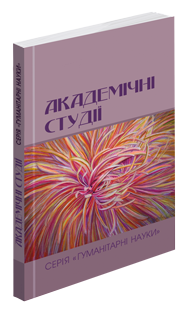Abstract
This article explores the essential role of linguostylistics in shaping the methodological and communicative foundations for teaching English for Specific Purposes (ESP), particularly in economic and business contexts. Drawing from current trends in stylistic theory, discourse analysis, and applied linguistics, the study presents a comprehensive view of how linguistic and stylistic competence in professional registers contributes to the development of effective ESP curricula. Special attention is given to analyzing key stylistic features of professional genres such as reports, emails, presentations, negotiations, and academic business writing from both theoretical and practical perspectives. The authors emphasize the importance of integrating stylistic awareness into ESP teacher training, proposing pedagogical strategies aimed at enhancing learners’ discourse competence in domain-specific communication. Case studies in business English instruction illustrate the effectiveness of genre-based and stylistic approaches. The concluding section reflects on the future of ESP education in multilingual academic environments, highlighting the need to adapt curricula to the dynamic changes in global business communication. Thus, linguostylistics serves not only as a theoretical foundation but also as a practical tool that helps students develop not only language skills but also flexibility in language use according to the specifics of their professional activities. This approach ensures more effective integration of graduates into the international business environment and increases their competitiveness in the labor market.
References
Bhatia, V. K. (2004). Worlds of written discourse: A genre-based view. London : Continuum.
Dudley-Evans, T., & St John, M. J. (1998). Developments in English for Specific Purposes: A multi-disciplinary approach. Cambridge : Cambridge University Press.
Flowerdew, J. (2013). Discourse in English language education. London : Routledge.
Halliday, M. A. K., & Matthiessen, C. M. I. M. (2014). Halliday’s introduction to functional grammar (4th ed.). London : Routledge.
Hyland, K. (2005). Metadiscourse: Exploring interaction in writing. London : Continuum.
Hyland, K. (2011). Learning to write for academic purposes: Specificity and second language writing. In R. M. Manchon (Ed.). Learning-to-write and writing-to-learn in an additional language (pp. 17–35). Amsterdam : John Benjamins.
Swales, J. M. (1990). Genre analysis: English in academic and research settings. Cambridge : Cambridge University Press.
Widdowson, H. G. (2004). Text, context, pretext: Critical issues in discourse analysis. Oxford : Blackwell.
Yakhontova, T. (2002). “Cultural and disciplinary variation in academic discourse: The issue of influencing factors.” Journal of English for Academic Purposes, 1(2), 153–167.

This work is licensed under a Creative Commons Attribution 4.0 International License.

